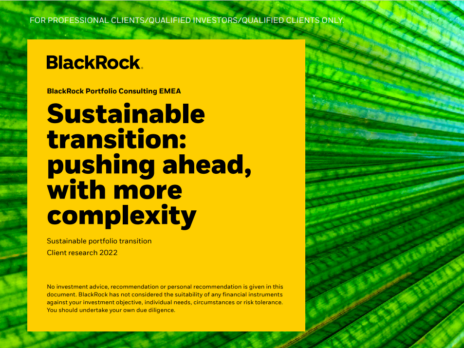

Achieving desired portfolio outcomes while incorporating sustainability starts with understanding the risk and return characteristics of sustainable indices – and also knowing the characteristics of your bond portfolio.
Sustainable fixed-income investing is growing at a rapid rate, but what does integration of such considerations look like in practice – and what strategies are available to investors?
While there are several approaches to integrating sustainability across fixed-income allocations, well over 90% of sustainable indexed fixed-income UCITS ETF assets under management track sustainable SRI indices, based on business involvement and minimum ESG ratings.
An indexing approach to sustainable fixed income may come with several benefits. Sustainable fixed-income indices are built with a rules-based, transparent approach, where investors have clear visibility into constituents and the reasons behind additions and deletions. This gives sustainable fixed-income index fund investors transparency into the impact of their investments – and enables them to target portfolio outcomes with precision.
Sustainable fixed-income indices are constructed with a three-pronged approach:
- Business exclusion criteria: baseline screens that eliminate issuers that pose certain risks or violate an investor’s values.
- ESG rating: three key areas of environmental, social, and governance used to measure sustainability and ethical impacts of an investment in a company.
- ESG controversies: removal of issuers linked to events or headlines that pose risks, eliminate issuers that pose certain risks or are engaged in certain business activities that violate the fund’s investment objectives.
Knowing your beta
When building sustainable portfolios, it is important for investors to be aware that each fixed-income asset class comes with its own unique characteristics. For example, euro investment-grade corporate bonds are highly homogenous in their credit quality, sector, and maturity, while US dollar investment-grade bonds offer more disparate characteristics. While emerging market bond returns tend to be driven by idiosyncratic risk, variables such as interest rates may have the most impact on developed market bond returns.
As each fixed-income asset class has its own unique features, sustainable characteristics may impact performance in different ways. This is why incorporating sustainability in fixed income requires investors to know their beta at an asset class level.
Implementation with index funds may have several benefits
Integrating sustainability while maintaining fixed-income risk and return objectives requires a comprehensive understanding of both sustainable fixed-income and existing fixed-income portfolio characteristics. With this knowledge, investors can integrate sustainability with whatever adjustments are deemed necessary at the asset allocation level to maintain the portfolio’s risk and return profile.
Sustainable fixed-income index funds are ideally suited for this purpose for several reasons. Sustainable fixed-income indices are built with an objective, rules-based approach, and the index funds that track them generally publish their holdings daily. As such, sustainable fixed-income index funds offer transparency in their composition and characteristics – giving investors the detail they need to integrate sustainability while targeting desired outcomes with precision.
Sustainable fixed-income indices have also been shown to deliver on their objective of improving sustainable profiles, both with respect to ESG rating and carbon emissions intensity. An ESG rating is a measure of an issuer’s resilience to long-term, industry material environmental, social and governance risk. When an index is constructed, its ESG rating may improve by removing the lowest-rated ESG issuers from the starting universe of bonds.
Carbon emissions intensity measures how much a company is emitting relative to its level of business output. This metric may improve with fossil-fuel-related business involvement screens and translation of higher emitters (relative to output) to a lower environment rating (industry specific) as part of the overall issuer ESG rating. For US investment-grade corporate bonds, the sustainable index delivered significant sustainable profile improvement by both metrics.
Investors utilising ESG ratings and carbon emissions intensity metrics at an overall portfolio level should understand the drivers of improvements in both metrics. For example, in Bloomberg’s MSCI US Corporate Sustainable SRI Index, the ESG rating improvement is achieved through both business involvement screens and removing issuers with below BBB ESG rating from MSCI.
How to implement sustainability into fixed-income portfolios
Incorporating exposures with an enhanced ESG rating into existing fixed-income portfolios will improve the overall resiliency of that portfolio and potentially lower overall portfolio risk. For investors who wish to demonstrate a commitment to a specific objective such as carbon intensity reduction, sustainable SRI fixed-income index exposures provide an immediate, scalable solution. By incorporating sustainable SRI fixed-income exposures into conventional fixed-income portfolios, investors may potentially improve traditional investment risk metrics while also achieving specific ESG objectives.
But how can ETFs help fixed-income investors achieve their sustainable goals?
Sustainable fixed-income ETFs rated higher than their conventional peers on the ability to be resilient amid a challenging market environment. Evidence shows that sustainable fixed-income indices have retained a better bounce-back during “risk-off” periods (challenging economic times during which investors seek to reduce risk). During the risk-off period brought on by the onset of the Covid-19 pandemic in February and March 2020, sustainable indexes outperformed across a number of fixed-income asset classes, including emerging markets, US investment grade, and US high yield.
They boast an improved sustainability profile
Fixed-income ETFs allow investors to incorporate sustainability into their existing portfolios or build new portfolios with specific sustainable objectives. For example, investors can replace their investment-grade bond fund with a sustainable option. This one adjustment could have a notable effect on an investors’ overall portfolio’s ESG score. Say, for example, an investor is invested in an investment-grade bond with a relatively high carbon-intensity score of 310. Switching this holding for a sustainable equivalent with a carbon-intensity score of 95 could raise an investors’ fund’s overall ESG score by circa 10%, according to the Bloomberg MSCI index at the end of 2021. The sustainable option has a much lower carbon emissions intensity and a higher/improved ESG score.
They are cost-effective
At the individual investment level, ETFs can lend affordable and efficient access to sustainable fixed-income markets. They allow market participants to increasingly incorporate sustainable aspects into their investments, providing portfolio resilience. They are transparent, accessible, liquid and efficient, making these instruments increasingly useful tools for improving the sustainability profile of fixed-income portfolios.
An indexing approach to sustainable fixed income
Now, more than ever investors are choosing to build their portfolios with sustainable fixed income and are largely following an indexed best-in-class approach. BlackRock’s research suggests that integrating sustainability through best-in-class (sustainable SRI) indices can impact the risk and returns of certain fixed-income asset classes more than others.
At the same time, different market conditions can amplify differences in risk and returns between sustainable SRI indices and their parent non-sustainable indices. An understanding of these dynamics and having the right analytical tools will be important to investors who seek to improve their fixed-income sustainability profile while still achieving the desired portfolio outcomes, such as targeting a specific yield level or maintaining a desired duration profile.
Index performance returns do not reflect any management fees, transaction costs or expenses. Indices are unmanaged and one cannot invest directly in an index. This information should not be relied upon as research, investment advice, or a recommendation regarding any products, strategies, or any security in particular. This is for illustrative and informational purposes and is subject to change. It has not been approved by any regulatory authority or securities regulator. The ESG considerations discussed herein may affect an investment team’s decision to invest in certain companies or industries from time to time. Results may differ from portfolios that do not apply similar ESG considerations to their investment process.
The benchmark index only excludes companies engaging in certain activities inconsistent with ESG criteria if such activities exceed the thresholds determined by the index provider. Investors should therefore make a personal ethical assessment of the benchmark index’s ESG screening prior to investing in the Fund. Such ESG screening may adversely affect the value of the Fund’s investments compared to a fund without such screening.
This document is marketing material: Before investing, please read the Prospectus and the KIID available on www.ishares.com/it, which contain a summary of investors’ rights.







